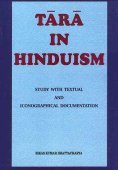Kapalika, Kāpālika, Kapālikā: 21 definitions
Introduction:
Kapalika means something in Hinduism, Sanskrit, the history of ancient India, Marathi, Hindi. If you want to know the exact meaning, history, etymology or English translation of this term then check out the descriptions on this page. Add your comment or reference to a book if you want to contribute to this summary article.
Kapalika has 19 English definitions available.
Alternative spellings of this word include Kapalik.
Languages of India and abroad
Sanskrit dictionary
[Deutsch Wörterbuch]
Source: Cologne Digital Sanskrit Dictionaries: Böhtlingk and Roth Grosses Petersburger WörterbuchKapālikā (कपालिका):—(von kapāla) f. gaṇa śarkarādi zu [Pāṇini’s acht Bücher 5, 3, 107.]
1) Scherbe [Kauśika’s Sūtra zum Atuarvaveda 26.] [Manu’s Gesetzbuch 4, 78. 8, 250.] [Mahābhārata 13, 5013.] [Suśruta 1, 268, 12. 2, 12, 20.] —
2) Weinstein der Zähne [Suśruta 1, 305, 9. 2, 128, 13.] — kapālika adj. [Pañcatantra I, 239] wohl fehlerhaft für kāpālika .
--- OR ---
Kāpālika (कापालिक):—
1) (wie eben) a) adj. oxyt. = kapālikeva gaṇa śarkarādi zu [Pāṇini’s acht Bücher 5, 3, 107.] — b) m. Anhänger einer bestimmten Śiva'itischen Secte; hat seinen Namen daher, dass er mit Menschenschädeln sich schmückt und aus Menschenschädeln isst. [Colebrooke I, 406.] [Bhartṛhari 1, 64.] [Prabodhacandrodaja 53, 5. fgg.] (vgl. die deutsche Uebers. [S. 172. fg.]). [Kathāsaritsāgara 26, 248.] dhṛtakāpālikavratāḥ [19, 74.] [Burnouf 568.] Nach dem [Tantrasāra im Śabdakalpadruma] auch Bez. einer Mischlingskaste (vgl. kapālin). —
2) (vom vorhergeh.) einem Kāpālika eigenthümlich: aho puṇyaṃ kāpālikaṃ caritam [Prabodhacandrodaja 57, 12.] kapālikamiva (mit Kürze, die zum Versmaass stimmt) vrataṃ dhatte [Pañcatantra I, 239.]
--- OR ---
Kapālikā (कपालिका):—, in Betreff von [Pañcatantra I, 239] vgl. [Spr. 1886.]
--- OR ---
Kāpālika (कापालिक):—
1) b) [Varāhamihira’s Bṛhajjātaka S. 87,22.] [Kathāsaritsāgara 121,13. 15. fgg.] [VAJRAS. 208,] [Nalopākhyāna] [WILSON, Sel. Works 1,21. 28. 264.] [Lassen’s Anthologie (II) 87,8.] [Oxforder Handschriften 250,a,15. 23. fgg. 256,a,27. 258,a,31.] tantra [109,a,44.] mata [23. 30. 250,a,15.] siddhānta [109,a,45.] kāpālikācāra [34.] strīgamanaprāyaścitta [282,a,46.] kāpālikānnaprāyaścitta [281,b,28.] —
2) kapālika [Pañcatantra I, 239] fehlerhaft für kāpāla; vgl. [Spr. 1886.] —
3) m. Nomen proprium eines Lehrers [HALL 17.] eher khaṇḍakāpālika als ein Name aufzufassen.
Source: Cologne Digital Sanskrit Dictionaries: Sanskrit-Wörterbuch in kürzerer FassungKāpālika (कापालिक):——
1) *Adj. — a) = kapālikeva. — b) einem Kāpālika 2)a) eigenthümlich. —
2) m. — a) ein Anhänger einer best. Śiva'itischen Secte , der mit Menschenschädeln sich schmückt und aus ihnen isst , [Govindānanda] zu [Bādarāyaṇa’s Brahmasūtra 2,2,27] (S. 592). — b) eine best. Mischlingskaste. — c) Nomen proprium eines Lehrers. —
3) *n. Aussatz [Galano's Wörterbuch]
Sanskrit, also spelled संस्कृतम् (saṃskṛtam), is an ancient language of India commonly seen as the grandmother of the Indo-European language family (even English!). Closely allied with Prakrit and Pali, Sanskrit is more exhaustive in both grammar and terms and has the most extensive collection of literature in the world, greatly surpassing its sister-languages Greek and Latin.
See also (Relevant definitions)
Starts with: Kapalikam, Kapalikapranita, Kapalikarana, Kapalikaranasana, Kapalikari, Kapalikatva.
Ends with: Ankapalika, Candakapalika, Janukapalika, Khandakapalika, Mayakapalika, Pancakapalika, Shandakapalika, Vishvavasu kapalika.
Full-text (+278): Ugrabhairava, Khandakapalika, Damaru, Kapalikam, Nagarjuna, Skull-bearer, Somasiddhanta, Shandakapalika, Goraksha, Pancakapalika, Mankha, Skull, Satyasoma, Devasoma, Kapalisharman, Alcohol, Amrita, Somibhaṭṭāraka, Cutalainonpikal, Kapalikatva.
Relevant text
Search found 55 books and stories containing Kapalika, Kāpālika, Kapālikā, Kāpālikā, Kapālika, Kāpāḷika; (plurals include: Kapalikas, Kāpālikas, Kapālikās, Kāpālikās, Kapālikas, Kāpāḷikas). You can also click to the full overview containing English textual excerpts. Below are direct links for the most relevant articles:
Lakulisha-Pashupata (Philosophy and Practice) (by Geetika Kaw Kher)
Samkaracarya and Kapalikas < [Chapter 2 - Spread and Transition]
Kapalikas and the cult of body < [Chapter 2 - Spread and Transition]
Kapalikas and Natha Siddhas < [Chapter 2 - Spread and Transition]
Manusmriti with the Commentary of Medhatithi (by Ganganatha Jha)
Verse 8.250 < [Section XL - Disputes regarding Boundaries]
Verse 7.122 < [Section X - Internal Administration]
Verse 7.223 < [Section XVI - Subsequent Routine]
The Religion and Philosophy of Tevaram (Thevaram) (by M. A. Dorai Rangaswamy)
The various sects of Shaivism < [Volume 2 - Nampi Arurar and Mythology]
Symbology of the skull in the Mahavrata < [Volume 2 - Nampi Arurar and Mythology]
Chapter 3.8 - Brahma-shirascheda-murti (cutting off Brahma’s head) < [Volume 2 - Nampi Arurar and Mythology]
Dasarupaka (critical study) (by Anuru Ranjan Mishra)
Part 3-6 - Prahasana rules < [Chapter 3 - Prahasana (critical study)]
Part 7 - Characters of the drama (Mattavilāsa Prahasana) < [Chapter 3 - Prahasana (critical study)]
Part 12 - Society in the Mattavilāsa < [Chapter 3 - Prahasana (critical study)]
Satirical works of Kshemendra (study) (by Arpana Devi)
7.12. Summary of the Prabodhacandrodaya < [Chapter 1 - Introduction]
7.7. Summary of the Mattavilāsam < [Chapter 1 - Introduction]
A History of Indian Philosophy Volume 5 (by Surendranath Dasgupta)
Part 1 - The Literature and History of Southern Śaivism < [Chapter XXXIV - Literature of Southern Śaivism]
Part 1 - The Śaiva Philosophy in the Śiva-mahāpurāṇa < [Chapter XXXVII - The Śaiva Philosophy in the Purāṇas]
Part 3 - Māṇikka-vāchakar and Śaiva Siddhānta < [Chapter XXXVIII - Śaiva Philosophy in some of the Important texts]
Related products

